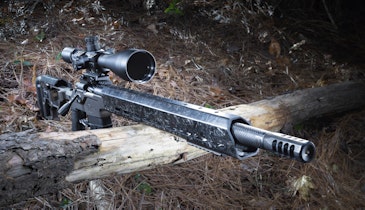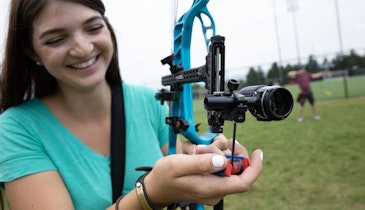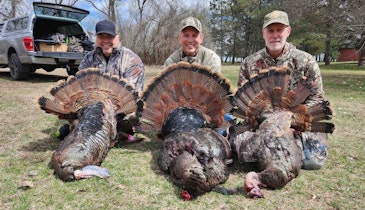
Successful coyote hunting on new or unfamiliar property includes gathering intelligence about previous sightings, corridors and anything else that can help you gain an edge. (Photo: Mark Kayser)
We all appreciate shortcuts whether it’s a way to finalize career tasks sooner or put yardwork behind you in record time. Wouldn’t you also like to find coyotes quicker as you prepare to predator hunt a new property?
Here are three shortcuts to get you into coyotes faster when time counts on your tight schedule.
Landowner Insight
If you don’t have a clue on where to begin your hunt on new property, your best bet is to reach out to the landowner or manager of a property. Find the person most intimate with a property on coyote sightings and ask, “where do you consistently see coyote activity?”
If they have a decades-long relationship with a property they’ve undoubtedly been witness to multiple coyote sightings. Over time those sightings likely have perpetuated a repeating patter. Whether it’s a trail, field or creek bottom, the land managers spend time on the land and over the years see coyote trends in certain locations.
Ask them if sightings in a particular location were at dawn or dusk, and if any locations hosted midday activity. This gives you locations to consider for dawn or dusk setups, or just to call at any time of day.
And if you do get lucky in a location don’t worry about hitting it again. Removing a coyote from any real estate opens up a vacuum and another coyote, likely a dominate one, will quickly move in and set up shop. Let the area sit for several weeks and then return. A new resident coyote is likely maintaining a similar pattern.
Livestock
You can always bet on livestock being an attractant to coyotes during any season. Coyotes may not even be hopeful for a leg-of-lamb sandwich, but routinely stay close to livestock operations including beef, hog, sheep, poultry and other future dining opportunities.
The big attractant is during birthing season. Cattle operations always see an influx of coyote visitation when calves start hitting the ground.
What’s on the breeze is the scent of afterbirth since calf birth fatalities are rare in a managed herd except in extreme weather events. Even so, when the occasional calf is stillborn or dies from birthing complications coyotes will take advantage of the unfortunate individual.
Afterbirth, on the other hand, is readily available. It’s basically the placenta or membrane that transfers nutrients from the cow to the calf. Blood vessels make up this membrane creating a hearty meal for the lucky coyote that finds it. At a large cattle or sheep operation there literally might be a dozen or more placentas hitting the ground in a 24-hour period during birthing season.
The treats don’t end there. Afterbirth is followed by the droppings of calves once they begin gulping in a mother’s milk. For the first two weeks of a calf’s life its manure is chalky looking due to its milk-rich makeup. Coyotes seek this concoction and gobble it up whenever they frequent livestock pastures. If you want to a shortcut to finding coyotes, simply find a livestock operation and hunt the fringes.
Corridors
Coyotes walk wherever the wind blows them, but habitually they follow strips of vegetation and edges. These can be in the form of rivers, creeks, hedgerows, wooded draws, weedy fence lines and even strips of wetlands.
A good way to inventory the travel corridors on your coyote hunting properties is too use popular hunting app like ScoutLook Weather that teams with satellite imagery programs like Google Earth. Plan a virtual flyover and note all connective corridors. Good setup locations include the junction of riparian areas and fields, or the mouth of draws and pastures. Add a topographical overlay to the imagery or do an onsite visit to pinpoint high points above the travel routes for setup potential.
Some shortcuts equal poor performance, but any shortcut to get you into great coyote hunting simply provides more time for you to chase fur.





